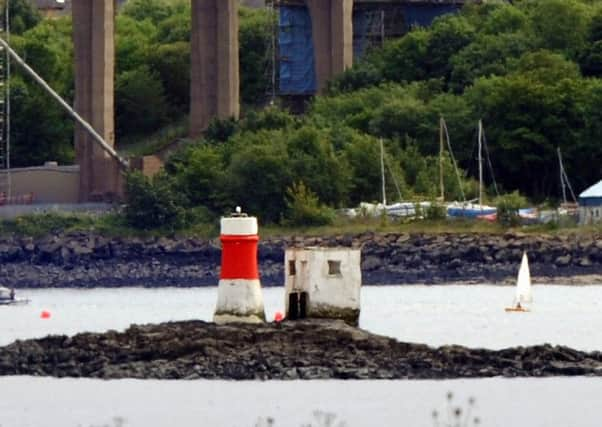Shining a beacon on ‘witch’ persecution


Back in March it had been suggested the distinctive red and white Beamer Beacon could be relocated to St David’s Harbour, in Dalgety Bay, where planning permission for a bistro and lighthouse has already been granted.
However, now it is included as part of the plans for a national memorial to the thousands of (mostly) women who were persecuted across Scotland during the 16th to 18th centuries.
Advertisement
Hide AdAdvertisement
Hide AdFife Council has launched a public consultation on plans for the sombre monument which would be located in Torryburn on the opposite side of the north bank of the river.
The Stevenson-built beacon was first erected on Beamer Rock in 1846 at the request of Inverkeithing Town Council.
However, in 2011, when the rock was chosen to provide the foundation point for the Queensferry Crossing’s massive central tower, it was painstakingly dismantled and put into storage by Transport Scotland.
Although it is not listed, it is considered to be nationally important, having protected mariners passing up and down in the Forth for 165 years, with each block of stone carefully numbered and catalogued.
Advertisement
Hide AdAdvertisement
Hide AdRather than going to Dalgety Bay, it is proposed that it is reinstalled as an information point into the history behind the persecutions of witches.
It comes after the international interest generated by a wreath-laying ceremony which highlighted the case of Torryburn woman Lilias Adie who died in custody in 1704.
The passing of the Scottish Witchcraft Act in 1593 made witchcraft, or consulting with witches, capital crimes.
It is estimated that between 3000 and 5000 women were publicly accused of being witches in Scotland, with at least 1400 recorded executions.
Advertisement
Hide AdAdvertisement
Hide AdThis includes Christiane Melvill from Abercorn who ‘confessed’ to meeting the devil and was put to death in 1644.
Annie Purdie and Margaret Allan from Newhalls were accused of witchcraft in 1629 and 1661 respectively, but their fate is unknown.
Fife councillor Kate Stewart said: “We’d love to see the creation of a memorial at Torryburn, dedicated to the memory of Lillias Adie and more generally to the many thousands of (mainly women) persecuted as ‘witches’ in early modern Scotland.
“It would help to re-position them away from the misguided modern ‘Halloween-style’ perception of fun they have become.
Advertisement
Hide AdAdvertisement
Hide Ad“They were the innocent victims of an unimaginable injustice.
“The council has a potentially ready-made piece of monumental architecture in the form of the 1840s Beamer Rock navigation beacon which has its own ties to Torryburn.
“It was designed by Stevenson, whose nanny for 20 years, Alison Cunningham, was born in Torryburn.
“We’re keen to gauge public opinion on its possible re-positioning and use for such an iconic role.”